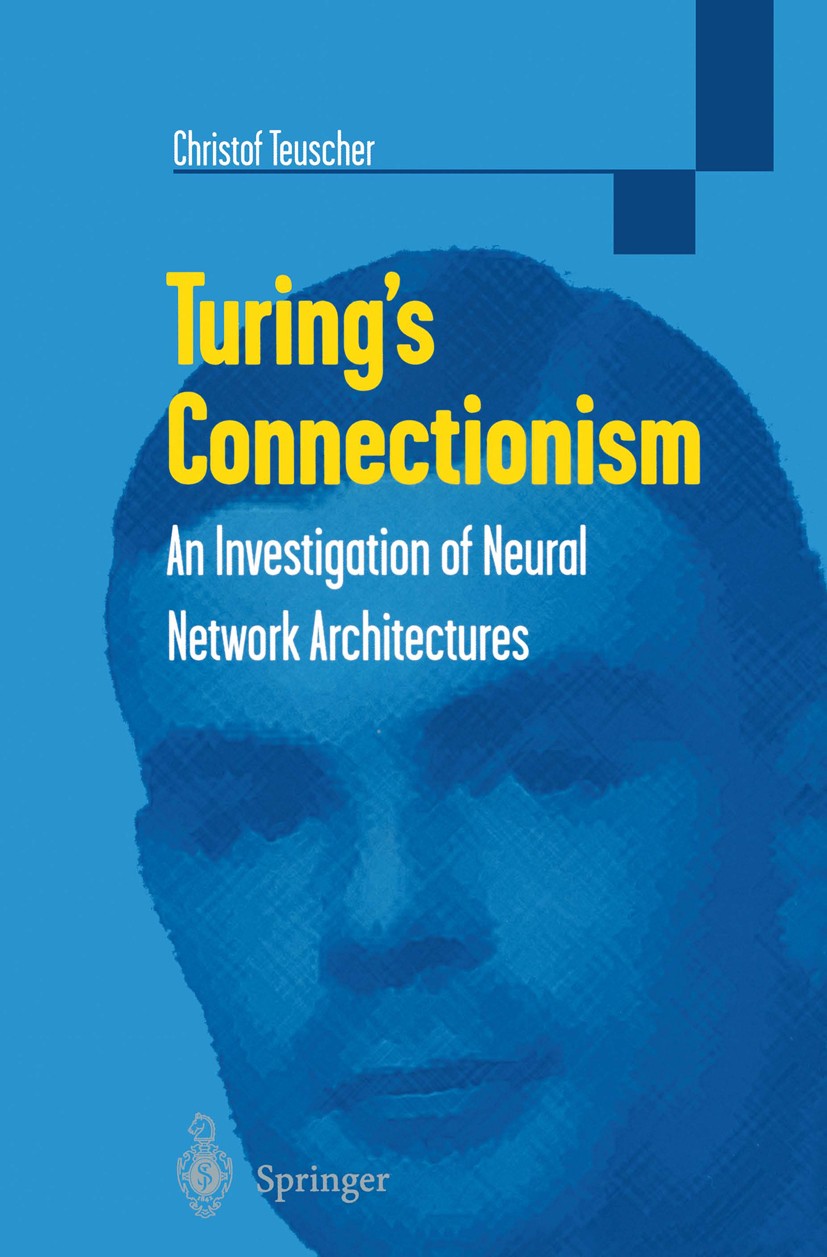| 书目名称 | Turing’s Connectionism | | 副标题 | An Investigation of | | 编辑 | Christof Teuscher | | 视频video | http://file.papertrans.cn/932/931064/931064.mp4 | | 概述 | Contains a Foreword by B. Jack Copeland and D. Proudfoot.Develops Turing‘s ideas, by building his machines and training them using evolutionary algorithms.Goes beyond Turing‘s ideas, and proposes new | | 丛书名称 | Discrete Mathematics and Theoretical Computer Science | | 图书封面 |  | | 描述 | Alan Mathison Turing (1912-1954) was the first to carry out substantial re search in the field now known as Artificial Intelligence (AI). He was thinking about machine intelligence at least as early as 1941 and during the war cir culated a typewritten paper on machine intelligence among his colleagues at the Government Code and Cypher School (GC & CS), Bletchley Park. Now lost, this was undoubtedly the earliest paper in the field of AI. It probably concerned machine learning and heuristic problem-solving; both were topics that Turing discussed extensively during the war years at GC & CS, as was mechanical chess [121]. In 1945, the war in Europe over, Turing was recruited by the National Physical Laboratory (NPL)! in London, his brief to design and develop an electronic stored-program digital computer-a concrete form of the universal Turing machine of 1936 [185]. Turing‘s technical report "Proposed Electronic 2 Calculator" , dating from the end of 1945 and containing his design for the Automatic Computing Engine (ACE), was the first relatively complete spec ification of an electronic stored-program digital computer [193,197]. (The document "First Draft of a Report on the EDVAC", | | 出版日期 | Book 2002 | | 关键词 | Alan Turing; Connectionism; Hardware; Neural Networks; Random Bollean Networks; algorithms; artificial int | | 版次 | 1 | | doi | https://doi.org/10.1007/978-1-4471-0161-1 | | isbn_softcover | 978-1-85233-475-8 | | isbn_ebook | 978-1-4471-0161-1 | | copyright | Springer-Verlag London 2002 |
The information of publication is updating

|
|
 |Archiver|手机版|小黑屋|
派博传思国际
( 京公网安备110108008328)
GMT+8, 2025-11-15 23:34
|Archiver|手机版|小黑屋|
派博传思国际
( 京公网安备110108008328)
GMT+8, 2025-11-15 23:34


